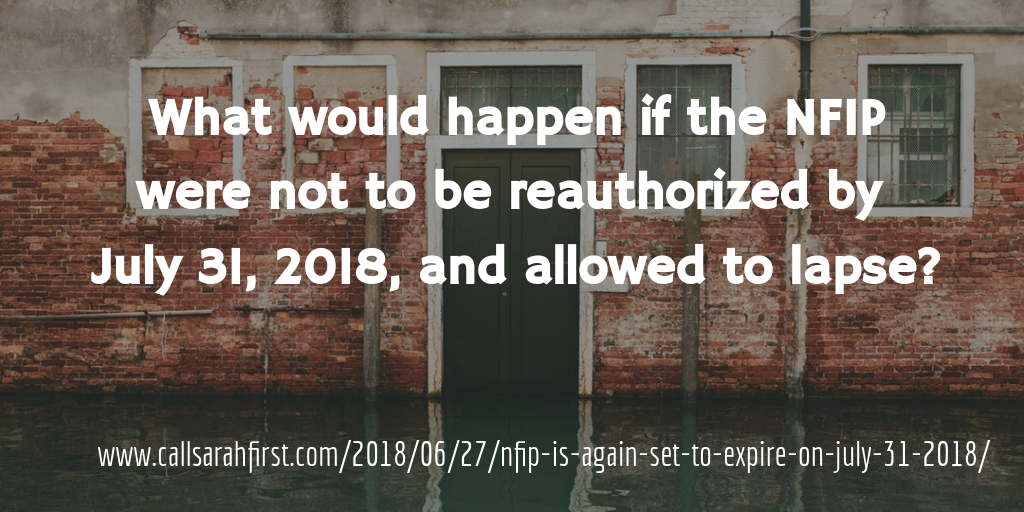National Flood Insurance Program (NFIP)
The National Flood Insurance Program (NFIP) aims to reduce the impact of flooding on private and public structures. It does so by providing affordable insurance to property owners, renters and businesses and by encouraging communities to adopt and enforce floodplain management regulations. These efforts help mitigate the effects of flooding on new and improved structures. The land area covered by the floodwaters of the base flood is the Special Flood Hazard Area (SFHA) on NFIP maps. The SFHA is the area where the National Flood Insurance Program's (NFIP's) floodplain management regulations must be enforced and the area where the mandatory purchase of flood insurance applies.
Overall, the program reduces the socio-economic impact of disasters by promoting the purchase and retention of general risk insurance, but also of flood insurance, specifically. For more information, visit www.FloodSmart.gov. While there is a growing market for private flood insurance, for many, the NFIP continues to be the primary source of asset protection against flooding, the most common and costly natural disaster in the United States.
The "Land of 10,000 Lakes" is more than just a motto for the great state of Minnesota. With more shoreline than Florida, California, and Hawaii combined, Minnesota is a state that relies on flood insurance.
Unfortunately, the NFIP is again set to expire on July 31, 2018 and the Senate has yet to pass a reform and reauthorization bill.
What would happen if the NFIP were not to be
reauthorized by July 31, 2018, and allowed to lapse?
In the past NFIP lapses, borrowers were not able to obtain flood insurance to close, renew, or increase loans secured by property in a SFHA until the NFIP was reauthorized. During the lapse in June 2010, estimates suggest that over 1,400 home sale closings were cancelled or delayed each day, representing over 40,000 sales per month. These figures applied to residential properties, but commercial properties were also affected by the NFIP lapse. In addition, the largest WYO insurer left the NFIP in 2011 reportedly because of the administrative burden associated with very short-term reauthorizations and lapses in authorization. Although no detailed analysis of the NFIP lapses in 2010 and 2011 has been undertaken, the economic impact could potentially have been broader than the reported effects on the domestic real estate market.
However, as currently structured, the NFIP is not financially sustainable over the long run. According to the Congressional Budget Office, the program is not charging enough in premiums to cover expected claims in catastrophic loss years, and has already borrowed over $30 billion from taxpayers to make up the difference. For these reasons, National Association of REALTORS® (NAR) supports a strengthened NFIP coupled with a robust private market to offer choices and maintain access to flood insurance in all markets at all times.
NAR supports:
- Reauthorizing and gradually strengthening the NFIP so it is sustainable over the long run;
- Encouraging the development of private market options to offer comparable flood insurance coverage at lower cost than NFIP;
- Providing federal assistance to high-risk property owners, including guaranteed loans, grants and buyouts in order to build to higher standards and keep insurance rates affordable;
- More granularly pricing NFIP policies to better reflect the property's specific risk; and
- Improving flood map accuracy so fewer property owners have to file expensive appeals.
As a constituent and REALTOR, I urge my congress people to act quickly to avoid another shutdown of the National Flood Insurance Program (NFIP). It is vital that Congress NOT let the program lapse! Over 5 million homeowners in 22,000 communities around the country rely on the NFIP to provide flood insurance. NAR research has consistently shown that 40,000 real estate transactions are at stake each month the program shuts down. Real estate markets prosper when there is certainty around transactions. Lapses in program coverage, or even repeated short-term extensions inject uncertainty into the market at a time when property sales are helping drive growth in our economy.
I ask that Congress come together to address NFIP as quickly as possible. REALTORS and property owners across the nation are counting on you to prevent a lapse in this vital program as you continue to work on a long-term reauthorization that includes needed reforms.
Current Legislation/Regulation
- HR 2874, The 21st Century Flood Reform Act
- S. 563/HR 1422, The Flood Insurance Market Parity and Modernization Act
NAR article of interest: Top 10 Threats to Real Estate in 2019
Here is my summary video about the article: Top 10 Threats to Real Estate in 2019




